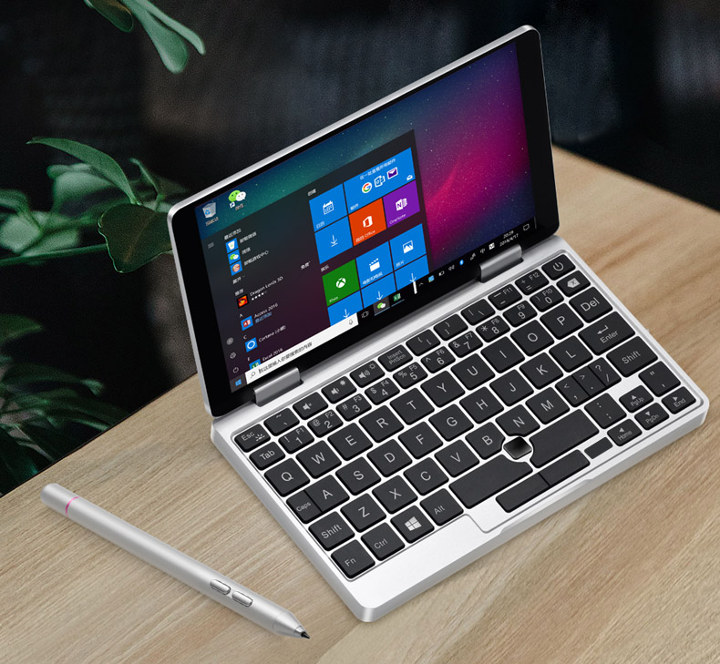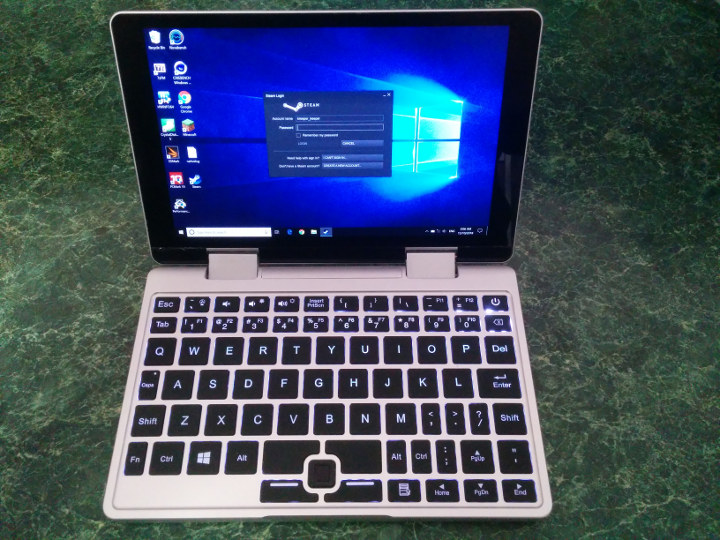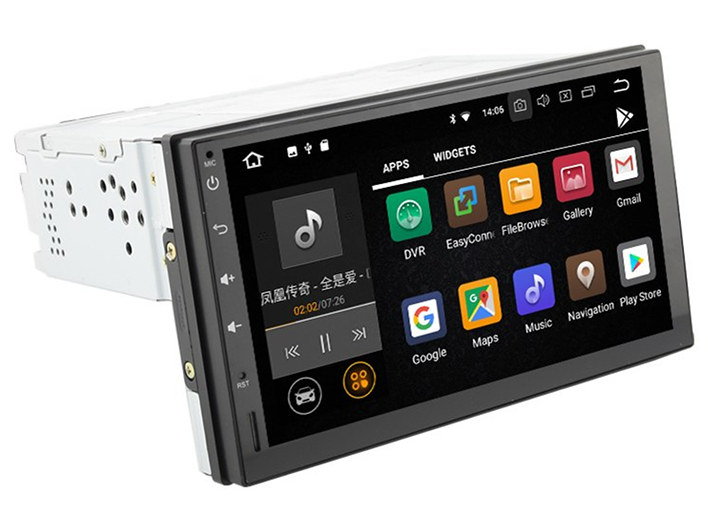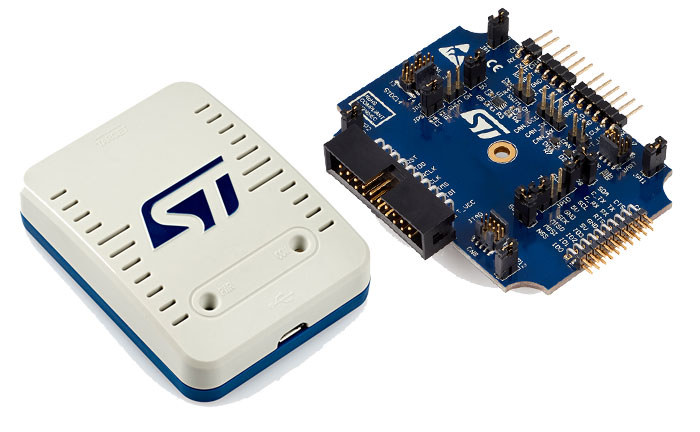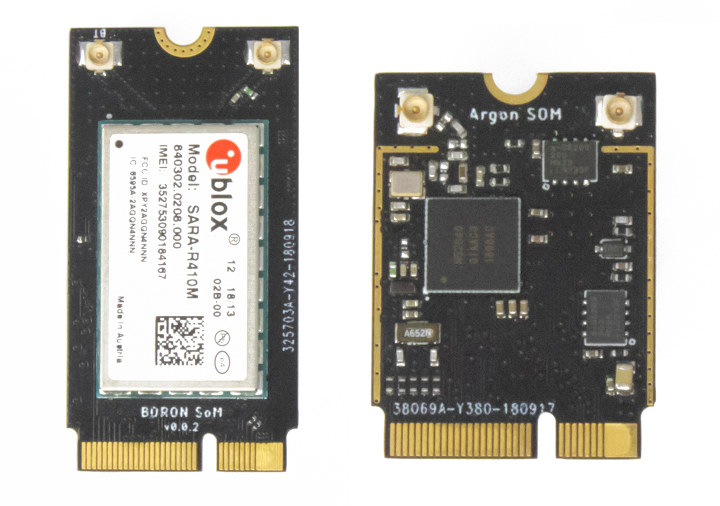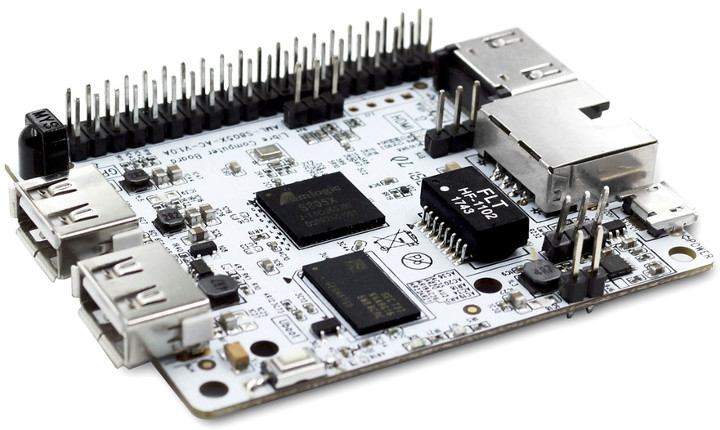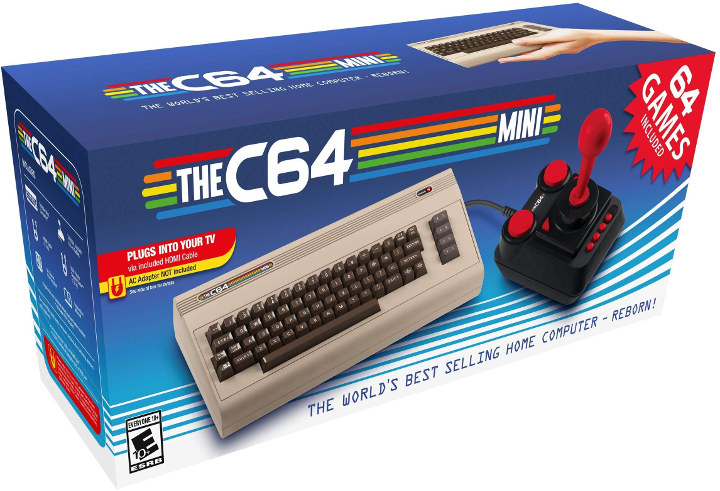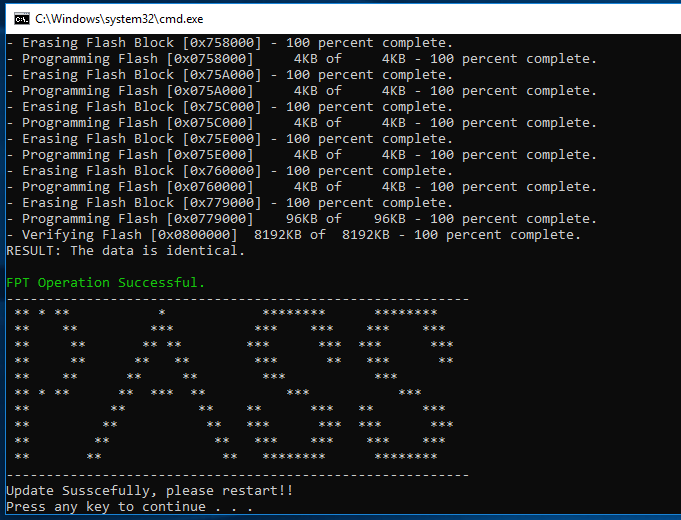GPD Pocket 2 Kaby lake mini laptop is getting some competition with One Mix 2 Yoga pocket laptop featuring the same Intel Core M3-7Y30 processor, but coupled with 8GB RAM, and a 256 SSD, and equipped with the usual 7″ touchscreen display and QWERTY keyboard. The product is an upgrade to the company’s One Mix Yoga powered by an Intel Atom x5 processor, and contrary top GPD Pocket 2 and the upcoming Topjoy Falcon which relied/will rely on Crowdfunding for their launch, One Mix 2 Yoga can be pre-ordered directly for $649.99 on GeekBuying with shipping planned for next month. [Update: GearBest has it too for the same price] One Mix 2 Yoga specifications: SoC – Intel Core M3-7Y30 dual core / quad thread Kaby Lake processor @ 1.00 GHz / 2.60 GHz (Turbo boost) with 4MB cache, 24EU Intel HD graphics 615 @ 300 MHz / 900 MHz (Turbo […]
TopJoy Falcon Review – A Windows 10 Mini Laptop (Prototype)
The Topjoy Falcon is a mini laptop reminiscent of netbooks and similar to the recent GPD Pocket 2 or One Mix Yoga devices. Marketed as an 8 inch (203mm) pocket-sized computer with the following specification: Intel Pentium Silver N5000 CPU 8G RAM 256G SSD disk 1920*1200 FHD IPS touch screen 6000 mAh battery for up to 8 hours working time 1 x USB A 3.0, 1 x USB Type-C 1 x 3.5mm headphone jack 1 x Mini HDMI port Active cooling 802.11ac WiFi, Bluetooth 4.0 Backlit keyboard Windows 10 Home Weight 550g (1lb 3oz) Fits easily in your pocket Although you would need a large pocket as whilst It is physically small consisting of an approximately 8″ by 5.2” and about 0.7” thick (203mm x 132mm x 18mm) when closed it is in reality too big for the average pocket. It will soon be available on Kickstarter with an early bird price of $399 and an expected retail price of […]
Rockchip PX30 Processor Powers Android 8.1 Car Infotainment Systems
Rockchip RK3326 and RK3308 are the first Arm Cortex A35 processors from the company, and are designed for smart AI solutions such as smart speakers and smart displays. It turns out RK3326 processor has a sibling called Rockchip PX30 with most of the same features, but with dual VOP (Video Output Processor) support to handle up to two independent displays, as well as an Ethernet MAC and a USB host block. Rockchip RK30 key features and specifications: CPU – Quad-core Arm Cortex-A35 GPU – Mali-G31 MP2 GPU Memory I/F – DDR4/DDR3/DDR3L/LPDDR3/LPDDR2 Storage I/F – MLC NAND, eMMC 4.51, Serial Nor FLASH Video 1080p H.265/H.264/VC-1/MPEG/VP8 video decoder 1080p H.264/VP8 video encoder Display Interfaces – MIPI-DSI/LVDS/RGB interface, dual VOP Audio I/F – 1x8ch I2S/TDM, 1x8ch PDM, 2x2ch I2S Camera I/F – MIPI CSI and DVP; built-in 8MP ISP Networking – 10/100M Ethernet Other Peripherals – SDIO3.0, USB2.0 HOST & OTG, 4x I2C, […]
STLink-V3 Modular Debugger & Programmer for STM32/STM8 Adds I2C, SPI, CAN Interfaces
STLink is the in-circuit debugger and programmer for STMicro STM32 and STM8 micro-control working with SWIM and JTAG/SWD interfaces. ST Microelectronics has now introduced STLink-V3 which also provides a Virtual COM port interface allowing the host PC to communicate with the target microcontroller through one UART, as well as bridge interfaces (SPI, I2C, CAN, GPIOs) which can be used for programming of the target through the bootloader for example. Key features of STLink V3 debugger: Stand-alone probe with modular extensions Self-powered through a USB connector (Micro-B) USB 2.0 high-speed compatible interface Direct firmware update support (DFU) JTAG / serial wire debugging (SWD) specific features:3 V to 3.6 V application voltage support and 5 V tolerant inputs Flat cables STDC14 to MIPI10 / STDC14 / MIPI20 (connectors with 1.27 mm pitch) JTAG communication support SWD and serial wire viewer (SWV) communication support SWIM specific features (only available with adapter board MB1440):1.65 […]
Particle Unveils Mesh SoMs and IoT Developer Tools
Earlier this year, Particle unveiled three IoT development boards based on nRF52840 Bluetooth 5/802.15.4 WiSoC and supporting Particle Mesh, which interestingly is not based on Bluetooth Mesh or even Bluetooth, and instead relies on Thread specification/OpenThread implementation, and the 802.15.4 radio of the chip with Bluetooth only used for the initial setup stage. Particle announced the shipping date (October 2018 or… this month) for their Mesh boards pre-ordered in February, as well as three new products in a recent blog post. One of the products is a family of system-on-modules compatible with Particle Mesh, while the other two are related IoT developer tools. Particle Mesh SOMs The Particle Mesh SOMs will have similar names and features as corresponding Particle mesh developers kits such as Boron (NB-IoT / eMTC + BLE + Mesh) and Argon (ESP32 WiFi, BLE + Mesh), but with an edge connector and designed as enterprise-grade, production-scale version […]
La Frite Amlogic S805X Board Runs Mainline Linux, Goes for $5 and Up (Crowdfunding)
Libre Computer first started with their AML-S905X-CC (aka Le Potato) board powered by Amlogic S905X processor last year, and they’ve since then launched several other boards based on Allwinner or Rockchip processor. But their latest “La Frite” board – also known as AML-S805X-AC – is an even lower cost version of the “Le Potato” board, with an Amlogic S805X processor limited to 1080p60 output and video decoding, a smaller footprint based on the one for Raspberry Pi Model A+, and price starting at just $5 on Kickstarter. AML-S805X-AC “La Frite” board specifications: SoC – Amlogic S805X quad core ARM Cortex-A53 processor @ 1.2 GHz with penta core ARM Mali-450MP GPU @ 650 MHz, and Amlogic Video Engine 10 System Memory – 512 MB or 1GB DDR4 @ 2400 MHz Storage – eMMC module connector, 128 Mb SPI NOR flash Video & Audio Output – HDMI 2.0 port Video Codecs Decoding […]
THEC64 Mini Small Commodore C64 Replica is Now for Sale for $80
Mini versions of retro computers and game consoles are now really a thing. After Nintendo NES Classic / SNES Classic, and Sony PlayStation Classic announcement, all of which are smaller versions of popular older consoles with modern interface like HDMI, Retro Games has now unveiled THEC64 Mini (apparently no typo) that is a small scale replica – half size to be exact – of Commodore C64 computer launched in 1982. THEC64 mini specifications based on Sunxi Wiki and official product page: SoC – Allwinner A20 dual core Cortex-A7 procesor System Memory – 512MB DDR3 Storage – TBD NAND flash Video Output – HDMI 1.4 output at 720p USB – 2x USB 2.0 host ports Misc – Power button Power Supply – 5V/1A via micro USB port Dimensions – 205 x 105 x 35mm You may notice a keyboard on the photo, but that’s just for aesthetics, as the keys are […]
Beelink X55 Review – Part 2, Take 2: New Drivers and BIOS
When I reviewed the Beelink X55 earlier, I encountered poor graphics performance when testing the device with its ‘Out-Of-The-Box’ configuration. As a quick reminder the Beelink X55 is a NUC-style mini PC powered with an Intel Pentium Silver J5005 processor and comes with a 128GB mSATA SSD with pre-installed Windows 10 Home together with 8GB DDR4 RAM (soldered and is non-expandable) and space plus a connector for an SSD. In an attempt to address the poor graphics performance I reinstalled Windows using Microsoft’s ISO however I then found I had missing drivers: Having contacted Beelink through the support email enclosed with the device they replied with a link to a full driver pack. So having downloaded and unzipped the file I updated the first driver: followed by the second: resulting in additional entries to the Intel Dynamic Platform and Thermal Framework (DPTF). Having fixed the driver issue I then reran […]

